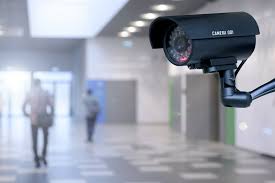The Growing Threat of Surveillance Devices in Business Environments

In today’s hyper-connected world, businesses are rapidly adapting to new technologies. However, alongside innovation comes an unsettling concern: the increasing prevalence of surveillance devices in work environments. This growing trend raises serious ethical and legal questions about privacy, security, and trust, which every organisation must navigate carefully to protect their interests, as well as those of their employees.
Many companies are unaware of how vulnerable they are to eavesdropping and monitoring through these devices. From simple audio recorders to sophisticated camera systems, the technology available today makes it easier than ever for nefarious actors to invade a company’s privacy. In this context, seeking assistance from professional bug detection services can be a proactive step to safeguard sensitive information and stay one step ahead of potential threats.
Understanding the Landscape of Surveillance
Surveillance devices have gained notoriety not only for their ability to monitor conversations but also for their potential misuse. The advent of affordable technology means anyone with criminal intent can acquire tools that were once only in the purview of government or large corporations. In fact, research shows that surveillance device sales have skyrocketed in recent years, driven by advancements in miniaturisation and wireless technology.
Types of Surveillance Devices
1 Hidden Cameras: These can be discreetly placed in everyday objects such as smoke detectors or picture frames, allowing for continuous monitoring.
2 Audio Bugs: Small audio recorders can capture conversations without anyone being the wiser.
3 GPS Trackers: Often used for stolen vehicles, these devices can also be implanted in company cars to track employee movements.
4 Smart Technology Exploitation: Devices like smart speakers and IoT products may offer loopholes that can be exploited for surveillance purposes.
Each of these devices presents unique challenges for business environments, where sensitive discussions and strategic planning are intrinsic to daily function.
Legal Implications and Ethical Considerations
In the UK, laws surrounding surveillance are primarily governed by the Investigatory Powers Act 2016, the Data Protection Act 2018, and various employment statutes. These regulations aim to strike a balance between security and privacy rights, yet they can be far from straightforward. Misusing surveillance tools can lead to severe legal repercussions, including hefty fines and reputational damage.
Moreover, even if surveillance practices are technically legal, ethical considerations often come into play. Trust is a cornerstone of effective work environments. When employees feel they are being monitored, it can create a culture of suspicion that ultimately undermines motivation and productivity.
Employee Rights
It’s crucial to educate employees about their rights concerning workplace surveillance. Transparency is key; organisations should clearly communicate their surveillance policies. To foster an environment of trust and inclusion, employees must feel that their concerns will be taken seriously and that their privacy is protected.
Enhancing Security Posture
Given the rise in surveillance device threats, businesses need to adopt a multi-layered approach to security. Here are some actionable strategies:
1 Policy Development: Establish comprehensive surveillance and privacy policies that cover the use of cameras and other monitoring devices.
2 Regular Audits: Conduct regular audits of both internal and external surveillance capabilities to identify any potential gaps in security.
3 Training and Awareness: Offer regular training sessions to employees about the risks associated with eavesdropping and how they can report suspicious activities.
4 Bug Sweeping Services: Engaging professional bug detection services can help identify hidden surveillance devices within the workspace, acting as a safety net for organisations against potential invasions of privacy.
5 Incident Response Plans: Develop robust incident response plans to address any privacy breaches swiftly and effectively.
Case Studies and Real-World Implications
Consider a scenario in which a corporation’s confidential meetings are recorded without consent, leading to leaked information about an upcoming merger. The repercussions could be catastrophic: loss of competitive advantage, eroded stakeholder trust, and potential legal penalties. Conversely, proactive measures such as bug detection services can dramatically reduce the likelihood of these situations.
In another instance, a small yet growing tech company discovered hidden cameras in their conference rooms, which were used by a disgruntled ex-employee. By quickly engaging bug detection experts, they managed to avert a public relations nightmare and safeguard their intellectual property.
Future Outlook
As technology continues to evolve, so too will the tools used for surveillance. Looking ahead, businesses must remain vigilant in monitoring the landscape. Technology will undoubtedly present new challenges, but it will also offer solutions to combat these threats.
Investing in ongoing education, employing advanced detection techniques, and maintaining open channels of communication with employees can help bolster a company’s defence against surveillance incursions.
Conclusion
The threat posed by surveillance devices in business environments cannot be overstated. The balance between security and privacy is delicate but essential; organisations must navigate this terrain with care. By taking proactive steps such as engaging professional bug detection services, developing robust policies, and fostering transparency, businesses can protect themselves from the growing threat of surveillance—and ultimately, maintain a trustworthy and secure workplace.





